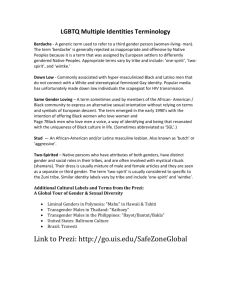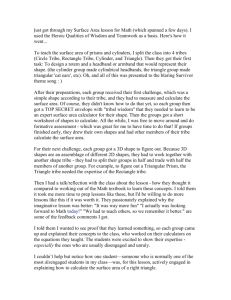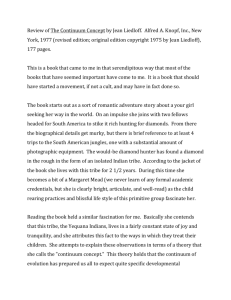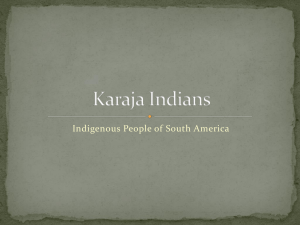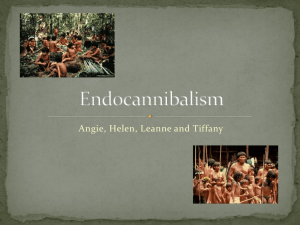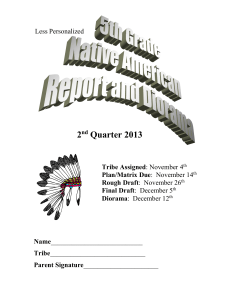Exploring Native Americans Through the Edward S. Curtis
advertisement
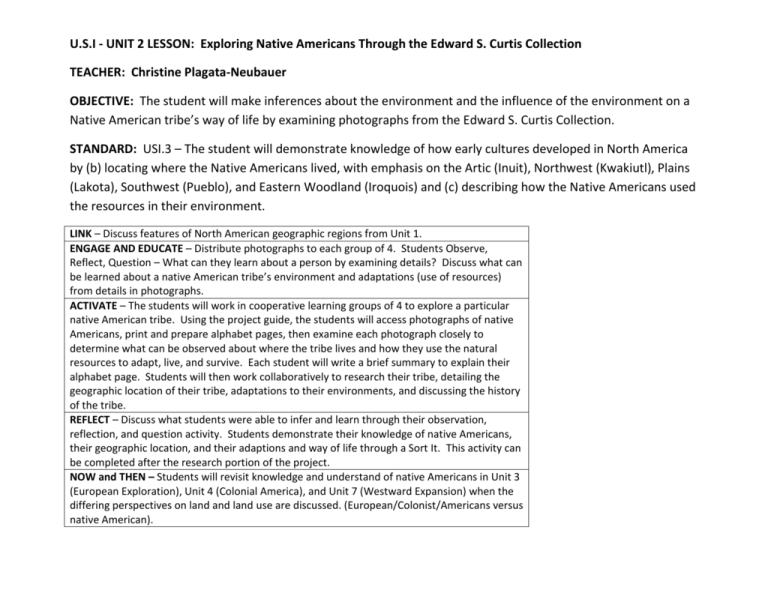
U.S.I - UNIT 2 LESSON: Exploring Native Americans Through the Edward S. Curtis Collection TEACHER: Christine Plagata-Neubauer OBJECTIVE: The student will make inferences about the environment and the influence of the environment on a Native American tribe’s way of life by examining photographs from the Edward S. Curtis Collection. STANDARD: USI.3 – The student will demonstrate knowledge of how early cultures developed in North America by (b) locating where the Native Americans lived, with emphasis on the Artic (Inuit), Northwest (Kwakiutl), Plains (Lakota), Southwest (Pueblo), and Eastern Woodland (Iroquois) and (c) describing how the Native Americans used the resources in their environment. LINK – Discuss features of North American geographic regions from Unit 1. ENGAGE AND EDUCATE – Distribute photographs to each group of 4. Students Observe, Reflect, Question – What can they learn about a person by examining details? Discuss what can be learned about a native American tribe’s environment and adaptations (use of resources) from details in photographs. ACTIVATE – The students will work in cooperative learning groups of 4 to explore a particular native American tribe. Using the project guide, the students will access photographs of native Americans, print and prepare alphabet pages, then examine each photograph closely to determine what can be observed about where the tribe lives and how they use the natural resources to adapt, live, and survive. Each student will write a brief summary to explain their alphabet page. Students will then work collaboratively to research their tribe, detailing the geographic location of their tribe, adaptations to their environments, and discussing the history of the tribe. REFLECT – Discuss what students were able to infer and learn through their observation, reflection, and question activity. Students demonstrate their knowledge of native Americans, their geographic location, and their adaptions and way of life through a Sort It. This activity can be completed after the research portion of the project. NOW and THEN – Students will revisit knowledge and understand of native Americans in Unit 3 (European Exploration), Unit 4 (Colonial America), and Unit 7 (Westward Expansion) when the differing perspectives on land and land use are discussed. (European/Colonist/Americans versus native American). Materials: Computers and access to Internet Native American Project Guide Native American Sample Alphabet Page – Vertical Native American Sample Alphabet Page - Horizontal Sort It Cards 1 large binder CLASS PRODUCT: A student-compiled Native American alphabet book that contains photographs, information, and analysis about Native American tribes.



